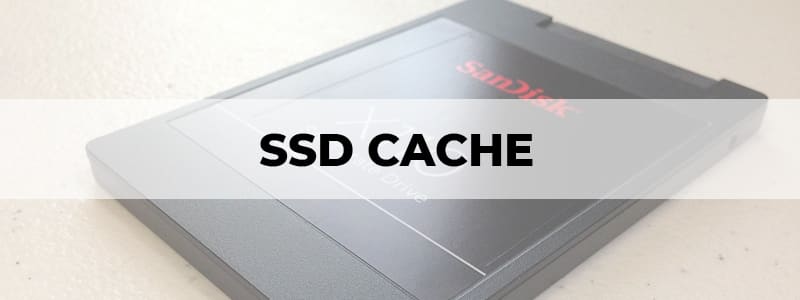
One of the benefits of picking an SSD in the SSD VS HDD debate is the ability to install the SDD as a boot drive. This, in effect, gives you the maximum speed that can be achieved by the SDD – if, that is, it has the capacity, and if a secondary data drive can be accommodated by your system as programs and data would be installed and stored there.
However, SSDs can also be used in the capacity of an SSD cache.
Here, the system can use another platter hard drive as the boot drive, with the lower-latency SSD storing data that you need frequent and quick access to (in other words, “hot” data) temporarily, for a controller-based solution.
Using an SSD cache allows you to ease the weight off of workloads intensive in I/O – think of running a virtual machine or a Docker container, or even a database.
Having an SSD cache boosts the system performance in an effectually dynamic manner and can be managed by the system automatically. This, incidentally, also goes a long way in helping you land on the best SSD for gaming.
How SSD Caches Are Implemented
There are multiple ways to implement an arrangement for SSD cache. Windows 10 ultrabooks have been notable for having SSD cache arrangements or SSD boot drives as a pre-requisite (provided that you make note of that Windows 10 needs to be configured to boot in UEFI mode for bootable tiers larger than 2TB, which it doesn’t support in legacy boot mode).
For newer desktops, Intel’s Optane Memory is a cool thing to consider for a system accelerator utilizing SSD cache. It’s a cross-point memory, non-volatile, but faster than NAND flash. You can also implement an SSD cache for Windows 10, 8, and 7 using conventional low-capacity SATA SSDs or even the mSATA. While the SATA SSD is to be used in the 2.5-inch form factor, the mSATA SSD module is both that and the physical interface of the same name. While it’s a dying breed of a technology, it’s useable, reliable, and speedy.
Synology SSD Cache
Some of the best NAS out there are set apart by their system cache support using an SSD. The Synology NAS requires some discussion first and foremost – their newer models all offer the ability to create an SSD cache through the use of the PCIe bus or NVMe M.2 SSDs. It’s recommended to avoid QLC NAND for caching drives, preferring 3D MLC NAND or 3D TLC NAND, as these are usually reserved for long-term storage. SATA SSDs are also moot here as the Synology DiskStation doesn’t support them.
FreeNAS SSD Cache
FreeNAS-certified servers, interestingly, geared towards higher-end small-to-medium business NAS systems, specifically recommend SSDs with high performance for read cache (in the L2ARC capacity), as well as SSD-based (or flash-based) write log devices (known as SLOG) for synchronous writes (similarly high-endurance).
However, it’s been argued, that it isn’t worth it to add an SSD to the FreeNAS as an SSD cache arrangement. Regardless, adding it is a super-easy process. From the web interface, you can simply go to Storage and click on Volume Manager. The ZFS volume can be selected and by clicking the plus icon and selecting the Cache (L2ARC) option, all that’s left is to click on the actual Add Volume button.
QNAP SSD Cache
When it comes to the QNAP, a higher HIT rate can be achieved by using the SSD cache arrangement, but it requires more resources from your system, owing to the usage of the LRU (Least Recently Used) algorithm as the default.
The LRU algorithm removes the items you least use first, which makes it faster – but since the cached data needs to be tracked in order to do this, the more resources are used by your CPU. The other option is the FIFO (First In, First Out) – while there’s a lower HIT rate, its less taxing on your system.
Ultimately, having a QNAP SSD cache arrangement can increase performance by up to 10 times while simultaneously reducing latency thrice as much, making it greatly beneficial for applications that demand IOPS in order to improve the workflow.
